Using Likert Scale Questions in Your Pulse
This handy question type is perfect for measuring attitudes, opinions and behaviours with greater nuance than a yes/no answer, but also great for our Pulsers because it makes something potentially complex easy to understand.

By Lois Fearne
Ah, the beloved Likert scale. This handy question type is perfect for measuring attitudes, opinions and behaviours with greater nuance than a yes/no answer, but also great for our Pulsers because it makes something potentially complex easy to understand.
Before we get into the nitty gritty, here’s some background.
The original Likert scale was developed in 1932 by Rensis Likert, a psychologist interested in measuring people’s opinions or attitudes on various items. Fast forward to nearly a century later, and they’re one of the most popular rating scales helping thousands of brands to get a holistic view of what people think. Scales to help you get the insights you need
History lesson ✅ Let’s dive into how Likert scale can be used in Pulses.
The Likert scale is a single-choice, closed-ended question that typically comprises 5 or 7 options, with a neutral midpoint and positive and negative options on either side. Here’s an example:
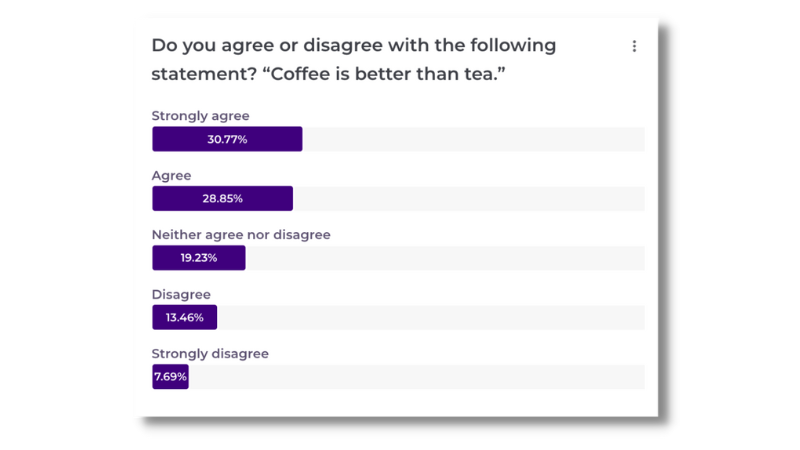
When should you use a Likert scale?
Good question! We recommend using the Likert scale when you need to measure attitudes, opinions and behaviours with greater nuance than a yes/no answer. The most common use cases of the Likert scale include the following:
- Exploring the likelihood of action being taken
- Collecting insights on feelings or perceptions of a specific topic
- Customer satisfaction
- Measuring importance
- How often an action occurs
Likert scales in action…
Let’s pretend you’re a sustainable bag manufacturer. You want to find out if consumers use reusable bags at the supermarket, so you ask:
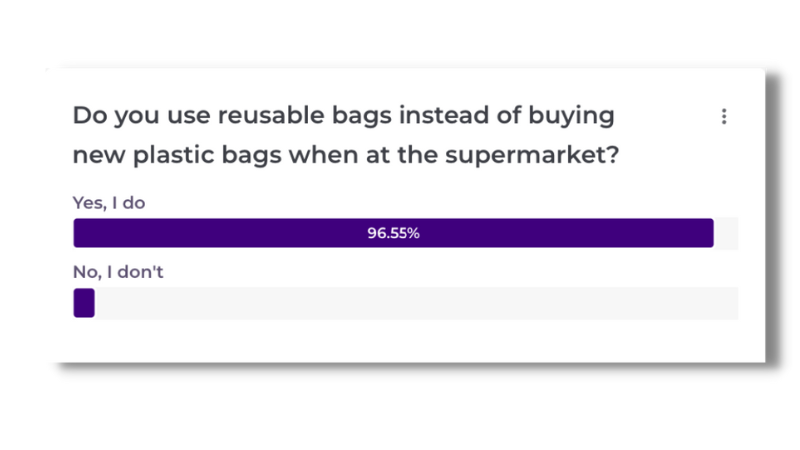
Whilst the Yes/No option gives you your answer, it leaves you wondering if they take reusable bags every time or just on that odd occasion. By using a Likert scale question instead, you can get more specific. Just look!
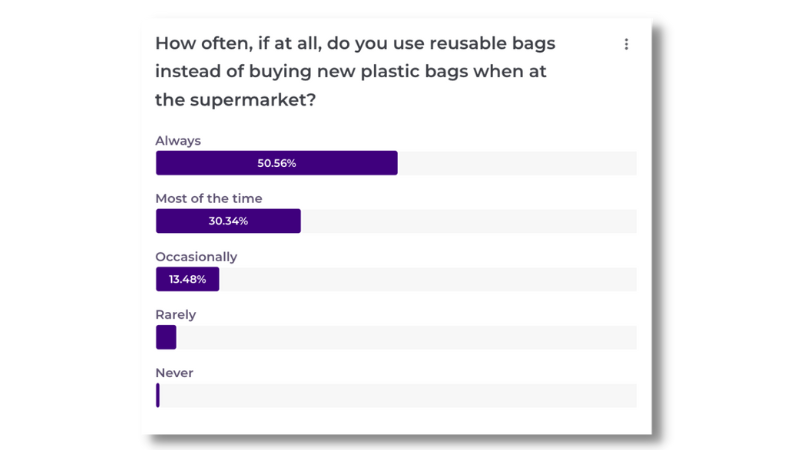
Now that you have more in-depth insight into how often consumers take reusable bags to the supermarket, you’re left wondering if they would purchase your new range of sustainable bags. So you ask…
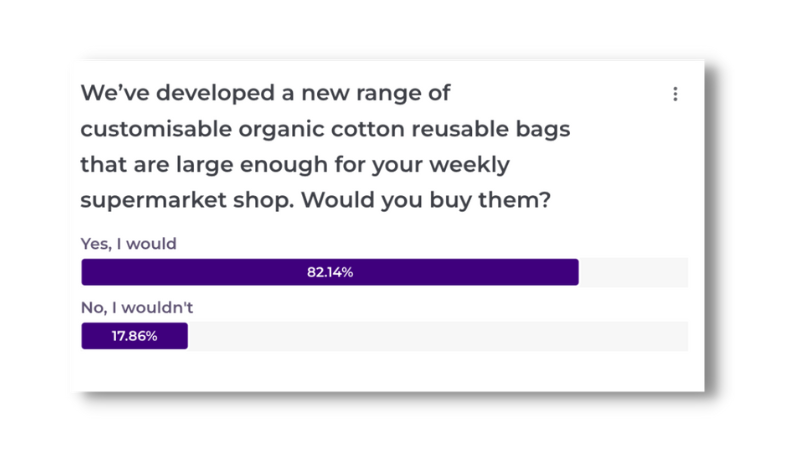
Again, you’ve found out if they would buy your bag, but let’s be honest, you put them a bit on the spot with that Yes/No answer. Instead, you could provide more context to your question and use a likelihood Likert scale to gather a more accurate purchase intent.
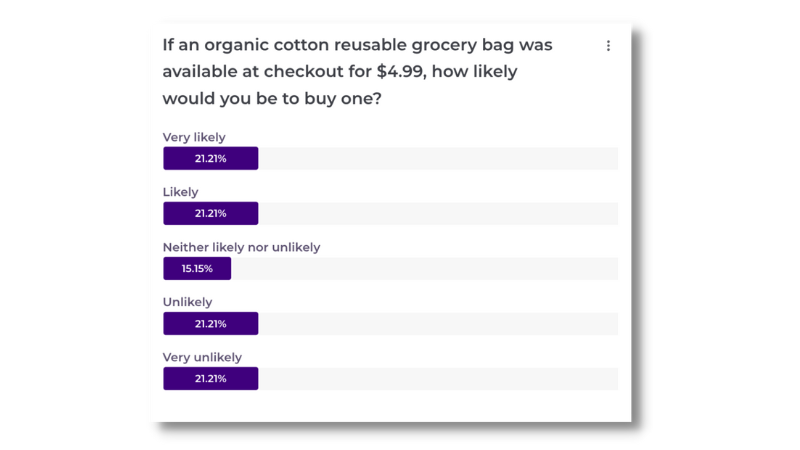
With some simple changes, you’ve gone from finding out if consumers use reusable bags to being specific on how often they use them and their purchase intent. We told you Likert scales are great, didn’t we?
Likert scales to help you get the insights you need
Agreement
- Strongly agree
- Agree
- Neither agree nor disagree
- Disagree
- Strongly disagree
Frequency
- Always
- Most of the time
- Occasionally
- Rarely
- Never
Likelihood
- Very likely
- Likely
- Neither likely nor unlikely
- Unlikely
- Very unlikely
Quality
- Excellent
- Good
- Fair
- Poor
- Very poor
Experience
- Very positive
- Positive
- Neutral
- Negative
- Very negative
Satisfaction
- Very satisfied
- Satisfied
- Neither satisfied nor dissatisfied
- Dissatisfied
- Very dissatisfied
💡Pro tips to keep in mind when using Likert scales
- Only measure one thing per question
As a rule of thumb, a Likert scale question should only measure one attitude at a time. This applies to any question you ask. Double-barrelled questions are always a big no-no. For more tips on writing a top-notch Pulse, tap here! - Keep the wording consistent
Each adjective should have a clear position on your Likert scale, from highest to lowest. Use the same adjective at both ends of your scale. For example, if you say “Strongly agree” then the other end of your scale should be “Strongly disagree” to avoid confusion. - Give Shuffle a miss
As much as we love the Shuffle option, you want to avoid using it when using Likert scale because it will result in your scale flowing in several directions and it will be harder for Pulser to read and answer accurately.
And there you have it. You now know the basics of the Likert scale, and how to use it in your Pulses. If you’ve questions or would just like us to glance over your Pulse before sending it, reach out to your Account Manager
Related posts








